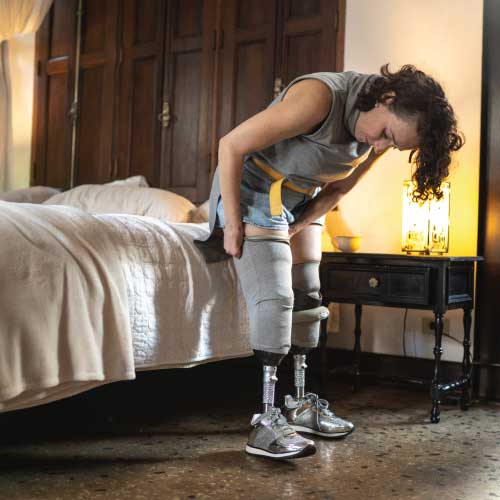The Roadmap to an AI-powered Prosthetic Future
Before the arrival of robotic prostheses, prosthetic devices didn't evolve much since the oldest wooden toe, deemed to be about 3,000 years old, was discovered by archeologists in 2011. Since that discovery, newer prosthetic limbs were more like biological limbs, such as the Modular Prosthetic Limb in 2011 and brain-controlled arm prostheses that could experience touch in 2020. As prosthetic advancements continue along those lines, the future of prosthetics appears to lead to artificial intelligence (A.I.).

According to György Lévay, a prosthetic user and research manager at Infinite Biomedical Technologies, A.I. will undoubtedly be a part of advanced prosthetic devices. As prosthetic technology advances, A.I. is the only system that can process data flowing between the brain and limbs.
The era of intelligent prostheses
The premise of fusing A.I. in robotic prosthetics is that the algorithm reads the nerve signals from the user's muscles to precisely control the prosthesis. But until recently, A.I. has only been successfully used in powered upper-limb prosthetics. However, in March 2020, researchers at the University of Michigan discovered a new technique that can help incorporate A.I. in lower-limb prostheses.
Researchers discovered a new technique that may help incorporate A.I. in lower-limb prostheses.
The new technique is based on regenerative peripheral nerve interface (RPNI). Surgeons use a small piece of muscle and wrap it around the end of the amputated nerve to produce amplified signals. Computational scientists on the team then apply machine learning algorithms to turn the signals into fine movements in a prosthetic.
The surgery is said to work on any limb loss level. The study's participants were able to use the smart prostheses on the first try. Furthermore, they could perform fine motor controls like making a fist, pinching fingers together, and picking up small items.
Combining artificial intelligence with regenerative peripheral nerve interface can give fine motor controls back to amputees.
In an interview with The Medical Futurist, Lévay confirmed that RPNI is being investigated and has good potential to allow for more complex control capabilities. Combining A.I. with RPNI can give fine motor controls back to amputees.
But there's a caveat. According to Lévay, signals from RPNI are relatively weak and still require implanting intramuscular electromyography (iEMG) sensors. Moreover, iEMG is a complicated and expensive technology that isn't widespread, complicating the usability of RPNI.
Current barriers for A.I. prosthetics
There are still several hurdles to be overcome before intelligent artificial limbs become mainstream.
There are still several hurdles to be overcome before intelligent artificial limbs become mainstream. First, many of the developments we've reported on Amputee Store depend on a computer's wired connection. Cynthia Chestek, one of the RPNI study's authors, confirms that there's still much work to be done before prosthetic concepts can leave the lab and be used in real-world situations.
Artificial intelligence will significantly increase the price of a prosthetic device by tens of thousands of dollars.
Once it leaves a lab, another hurdle is seeking approvals from regulators like the FDA, and the cost may discourage widespread use. Lévay confirmed this with The Medical Futurist, saying that including A.I. will significantly increase the price of a prosthetic device by tens of thousands of dollars.
Then there are the insurance companies. Prosthetic companies carry the burden of demonstrating the value of smart prostheses before insurance can cover smart devices.
Our unique individual neurological systems may make it challenging to train A.I. algorithms to decipher human intent.
Furthermore, intelligent prostheses have a high risk of abandonment. Lévay explained that experts still have a limited understanding of how the brain controls artificial limbs. There's also the reality of unique individual neurological systems, making it challenging to train A.I. algorithms to decipher human intent.











































































